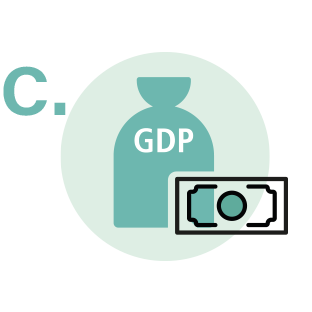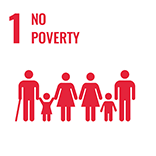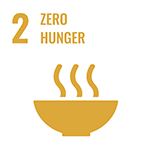The Winter Preparedness and Avalanche Readiness Programme, a comprehensive avalanche preparedness plan in Afghanistan, Pakistan and Tajikistan

Summary
The Winter Preparedness and Avalanche Readiness Programme is a comprehensive avalanche preparedness plan put in place by the Aga Khan Agency for Habitat (AKAH) which includes monitoring, early warning and capacity building. It seeks to reduce avalanche risk in Afghanistan, Pakistan and Tajikistan.
Every winter snow avalanches in remote mountains across Afghanistan, Pakistan and Tajikistan results in loss of many human lives, livestock, and infrastructure. Climate change is projected to increase frequency of an avalanche increasing the associated risk.
Through the “Winter Preparedness and Avalanche Readiness Programme”, the Aga Khan Agency for Habitat (AKAH) has put in place a comprehensive avalanche preparedness plan which includes risk assessment, weather monitoring, emergency communication, early warning, risk awareness, building community capacity through volunteers, and stockpiling essentials.The programme is based on a community level Hazard, Vulnerability and Risk Assessment (HVRA) where avalanche prone villages and the number of people exposed to avalanches are mapped. Series of community awareness sessions on avalanche risk and preparedness have been undertaken to educate community members in these avalanche prone villages, involving Avalanche Preparedness Team (AVPT).
Monitoring and early warning is an integral part of the AKAH’s Winter Preparedness and Avalanche Readiness Programme. Around 88 Weather Monitoring Posts (WMP) have been set up across these high avalanche risk terrains and are managed by trained WMP volunteers. These low cost WMPs provide critical local weather signals/parameters monitored by an Avalanche Expert in conjunction with global models to issue weekly weather bulletins highlighting likely avalanche days and affected regions. These bulletins serve as a weather advisory and early warning system and are passed on to communities to alert and advise them to stay in.
The AVPT and Search and Rescue Team (SART) also receives the weather advisory to put them on standby for any eventualities. Avalanche often results in displacement (ex-ante and ex-post) and to meet essential supplies during emergencies, stockpiles of winter items are set-up in most avalanche prone villages. These stockpiles are replenished at the start of winter if required. Emergency communication is the lifeline of emergency management and many avalanche prone villages do not have mobile service coverage. Communication becomes even more challenging during harsh winters. AKAH maintains at least one line of communication mainly through CODAN to ensure communication during emergencies.
Capacity building is the core activity of the AKAH’s Winter Preparedness and Avalanche Readiness Programme. The volunteers are trained regularly on required skills using internal as well as external experts. The WMP volunteers are trained on weather monitoring techniques and light maintenance of the system. The AVPT is trained on basic avalanche science and preparedness, and the SART is trained on high-altitude search and rescue. Self-evaluation using key indicators is done twice: at the start of the winter season and post-winter. The learnings from the self-evaluation exercise are incorporated in future preparedness plans.
Overview
- Location:
- Implementation sites:
-
- Multiple countries
- Multiple locations
- Mountain region:
-
Pamir, Karakoram, Himalaya
- Solution scale:
- Ecosystem type(s):
- Solution type(s):
- Sector(s):
- Other climate impact(s) addressed:
-
- Snow avalanche
- Climate impact time-scale(s):
- Main benefit associated with the solution:
- Co-benefit(s) associated with the solution implementation:
Solution details
Main beneficiaries & outcomes
The main beneficiaries are the community members living in high avalanche prone villages. The solution has been implemented in high avalanche prone villages across the AKAH programme area in Afghanistan, Pakistan and Tajikistan. This model can be scaled up in areas facing avalanche risk.
Planning and implementation
The Winter Preparedness and Avalanche Readiness Programme is led and implemented by AKAH. This programme is designed to ensure an adequate level of preparedness during the avalanche season. The process is described below in detail.
Pre-winter months
First, villages prone to avalanche are identified through a community-level risk assessment exercise. Weather Monitoring Posts (WMPs) are set up and volunteers are trained on managing and maintaining the system. Avalanche Preparedness Team (AVPT) members are selected and trained on basic avalanche science and preparedness. The AVPT members are tasked with conducting village awareness sessions on avalanche preparedness before the winter. Simultaneously, communication systems (CODAN, Mobile, VCN) are checked and repaired. Stockpiles are checked and replenished if needed. The Search and Rescue Team (SART) conducts high altitude rescue training sessions. A self-evaluation exercise to score against the key preparedness indicators is done to understand preparedness level.
During winter months
The functioning (reporting) of WMPs are monitored starting the first or second week of November. Daily weather reports (snow depth, rainfall condition, wind speed and direction, overcast condition, national and global forecast) are analysed by an Avalanche Expert, and weather advisories are issued, providing information on when and where avalanches will happen. The early warning is shared with the volunteers and communities to ensure adequate preparation measures, including pre-emptive evacuation, and the AVPT/SART are on standby in case of any eventualities.
Post winter
Second self-evaluation exercise is done, and lesson learned is considered for future preparedness sessions.
Finance
This is implemented as a part of AKAH core activities funded by AKAH core fund. The total cost is unknown. Cost benefit analysis has not been done.
Innovation
The innovation here is in the way risk assessment is done and use to build upon specific programmes.
Performance evaluation
Detailed impact analysis has not been done but the initial study of the disaster and loss data reveals that death per avalanche incident is less in AKAH-operated regions as compared to non-AKAH-operated areas in Afghanistan.
Long term project sustainability and maintenance
Regular engagement in the form of training (new and refresher) of volunteers (WMP, AVPT, SART) and maintenance of WMP is done every year ahead of winter months. This is a part of the regular programme since the start in 2014. So far the cost of the Winter Preparedness and Avalanche Readiness Programme is being taken up through AKAH core fund, but can easily be incorporated within the government risk reduction strategy.
Capacities for design and implementation
Knowledge
Scientific analysis in the form of risk assessment (HVRA) and weather models are at the core of the Winter Preparedness and Avalanche Readiness Programme. Despite being low cost and simple, the WMP is a scientific tool to collect localized weather data which gets reviewed and analysed by an expert.
The initial year was more research-oriented, as we needed to find the appropriate mechanism to collect data, ingest data, transmit and mobilise team members. Research is a key part of the programme, as methods to improve the system, such as using snow mast is continuously being explored. Community is equipped with simple WMP, snow-mast, and binocular to monitor snowpack parameters.
Technology
Weather modeling is the core of the programme which includes series of life-saving activities which is packaged within the AKAH’s Winter Preparedness and Avalanche Readiness Programme.
Political / Legal
Avalanche is the predominant winter hazard in mountains across Afghanistan, Pakistan and Tajikistan, and there is significant interest from government and non-government stakeholders to minimize risk. The pro-risk management policies adopted by the government are certainly helpful, and volunteerism in the community is instrumental in rolling out the solution.
Institutional
The AKAH’s Winter Preparedness Programme was rolled out as a core AKAH’s EM activities, without partnering with other agencies. However, partnerships with like-minded NGOs would be essential to scale up the solution to other geographical regions.
Socio-cultural
The social context did not have a significant influence on the roll-out of the programme. Community risk assessment was performed to identify and perform targeted interventions. No opposition was faced. The collaboration between a technical team and community is essential to roll out the Winter Preparedness and Avalanche Readiness Programme, as community members provide localised weather data, maintain the WMP system, conduct series of village awareness programmes, disseminate alert/advisories, and intervene during avalanches. Coordination is critical and the AKAH team coordinates with communities through volunteers.
Outlook & Scalability
Barriers and adverse effects
The main technical barrier faced is to ingest snowpack parameters from the avalanche source areas which are not easily accessible to the volunteers. This would improve the forecast model. Currently, having a snow mast installed and monitoring using binocular is being tried out.
No side/adverse effect have been noticed.
Transformation and future outlook
The lack of habitable land in high mountain landscapes forces people to live in areas prone to avalanches. The rise in avalanche hazards, partly attributed to climate change, further increases the risk. The AKAH’s Winter Preparedness and Avalanche Readiness Programme package leverages actionable information and builds local capacity to adapt to the climate change induced hazards. The solution will be effective in coping with changes induced by climate change.
Potential for upscaling and replication
The AKAH’s Winter Preparedness and Avalanche Readiness Programme consists of simple yet practical solutions that can easily be scaled up to avalanche prone communities. Willingness of the community to be a party to the solution is key. Avalanche preparedness programme is a priority on the agendas of most avalanche prone countries, but it may not be strongly reflected in NAPs. It has not been scaled up on large scale using external financing.










Comments
There is no content